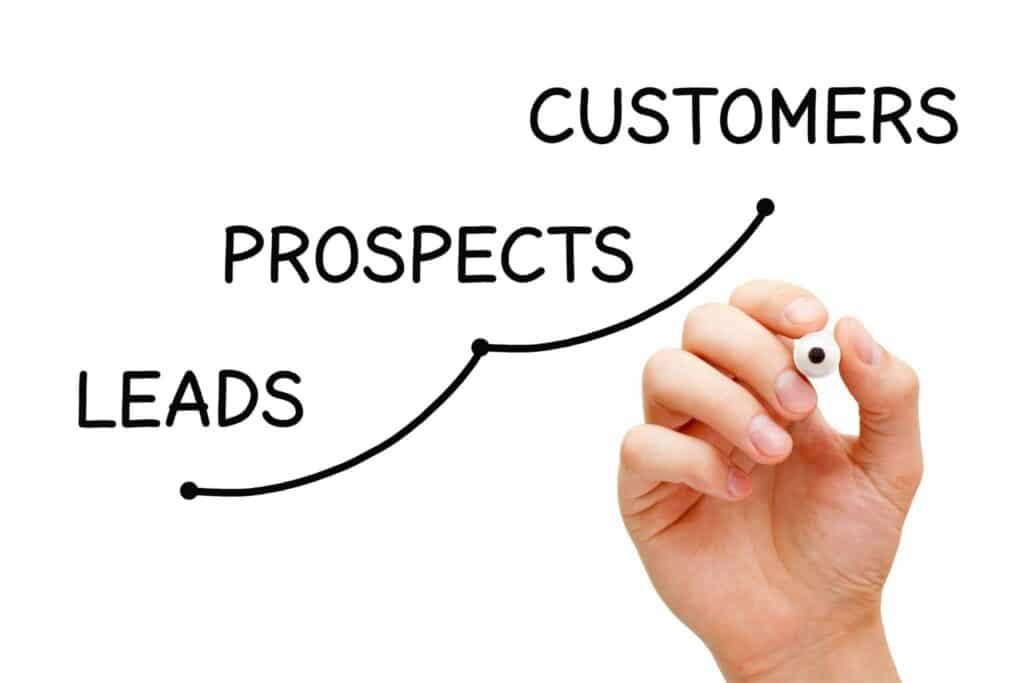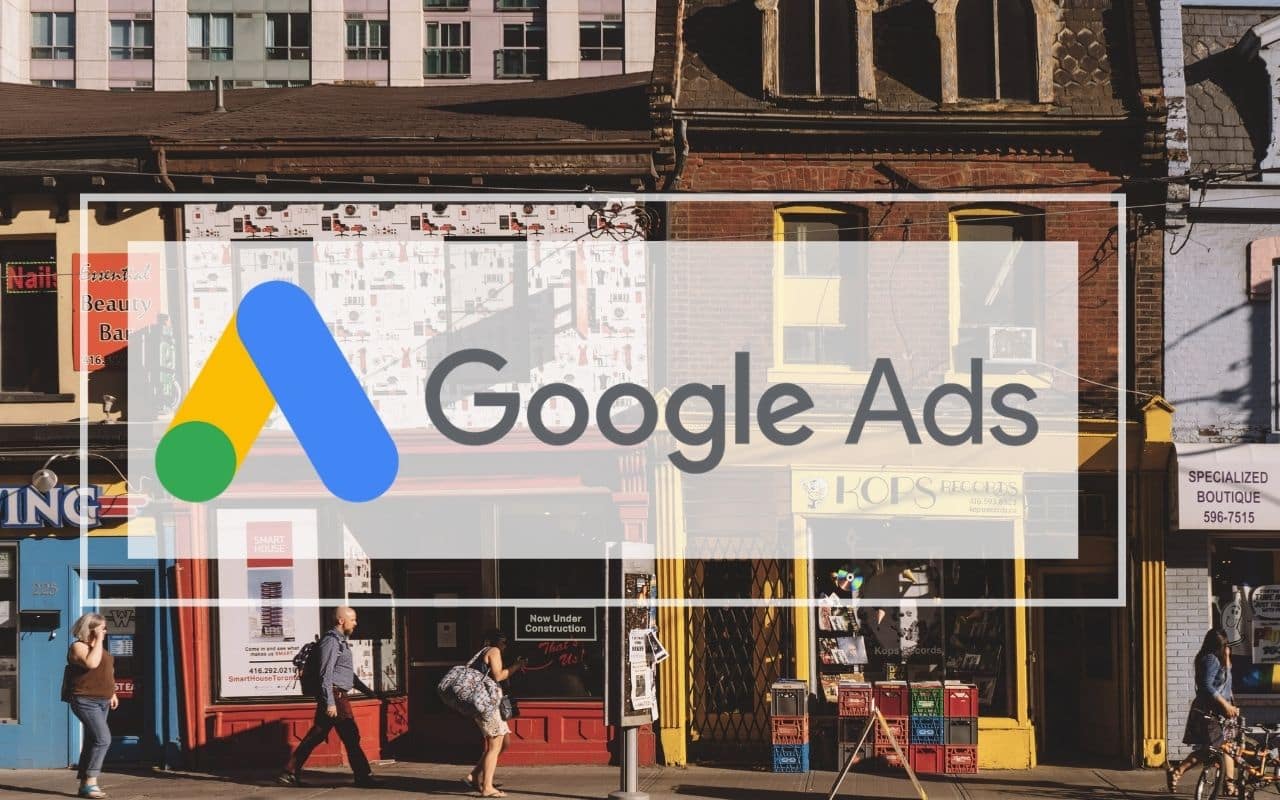
Stepping into the online marketing game as a small business can feel like you’re a little fish in an ocean full of behemoths.
As intimidating as it may appear, there is a space for you to find success. But as a small business, all of your time and money are precious. It’s only natural to wonder if Google Ads is the right strategy for you at this time.
There’s a lot to consider before diving into the world of online advertising. Let’s go through what Google Ads are and explore what it looks like for a small business to participate.
What Are Google Ads?
Google Ads (previously known as Google Adwords) is a vital tool in crafting an online presence. With a whopping3.5 billion searches per day, it’s extremely advantageous (pun intended 😉 ) to have an active presence on the search engine results pages (SERPs) of Google. Building meaningful credibility as a small business can take time.
That means you may not appear as one of the top contenders on a SERP for months or even years if you solely rely on your website’s discoverability. Pay-per-click (PPC) advertising is one way to get a leg up quickly.
Google ads also extend to other corners of the web too! Through retargeting, you can place ads relevant to your ideal customer
Google ads will appear through the web within three different placements:
1. Above organic results on a SERP
Search Ads can be found on the SERP at the top of the page. They will have a similar look to a regular search result but can include even more information such as your business address, hours of operation, specific landing pages, and more.
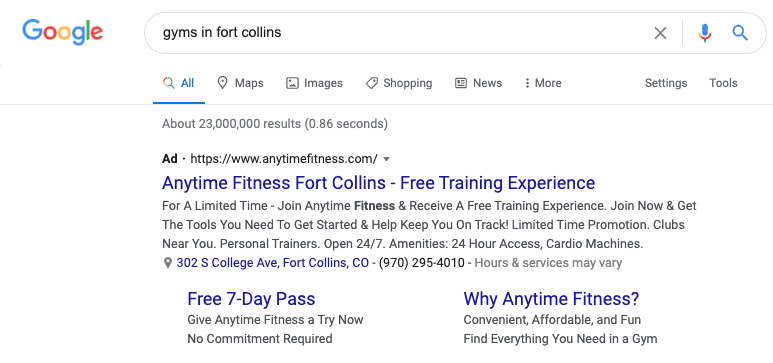
Product image ads –aka shopping ads– can appear at the top of the SERP as well. This type of ad will be included on a carousel with other relevant product ads. A user can then follow the link directly to the product landing page to make their purchase.
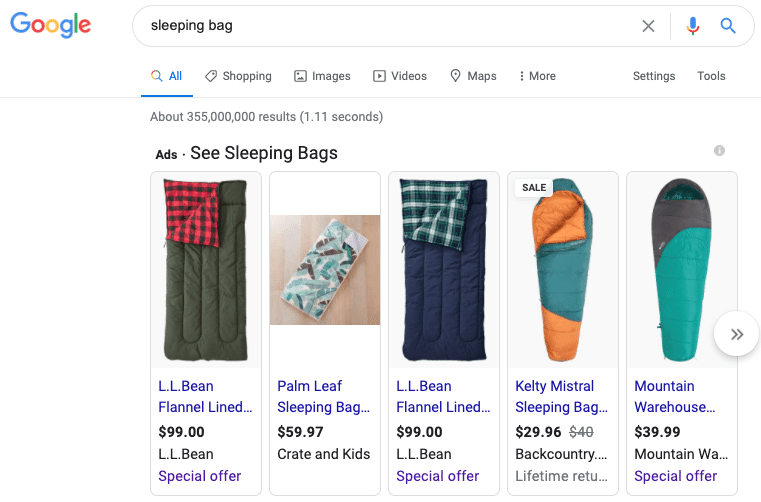
2. Across the Google Display Network
Have you ever noticed an ad placed in a banner or mid-blog on a website? They likely got there due to the Google Display Network. Essentially, the Google Display Network is a cohort of third-party websites in partnership with Google. A website can agree to serve Google Display ads to earn a partial share of the ad revenue
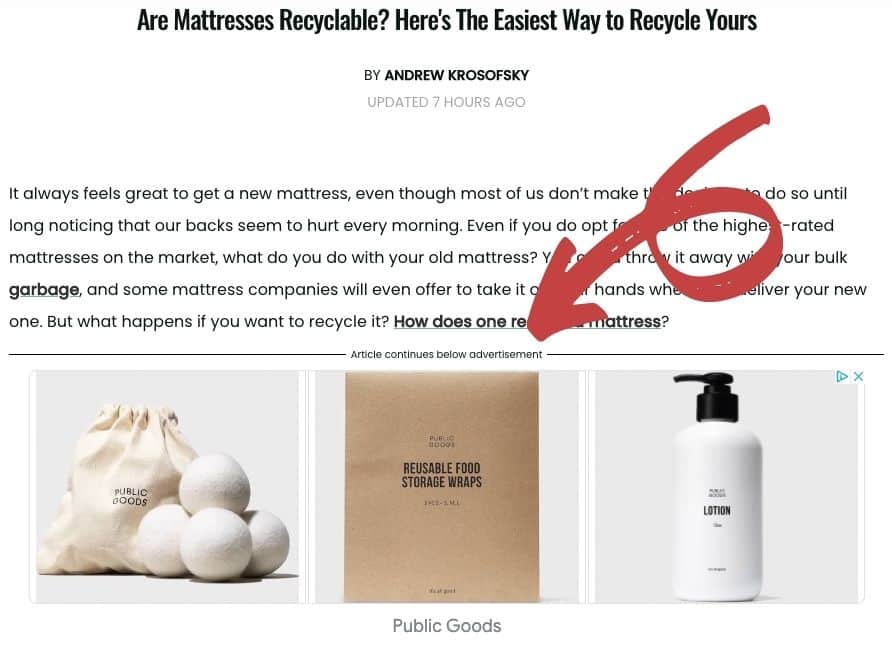
3. On Youtube
As an entity under the Google umbrella, Youtube is another place you can easily place ads on through Google Ads. It’s a ripe playing field for a small business. Since Youtube is the number one video sharing platform on the web, the potential audience is extensive. There are a few different ad types you can choose from:
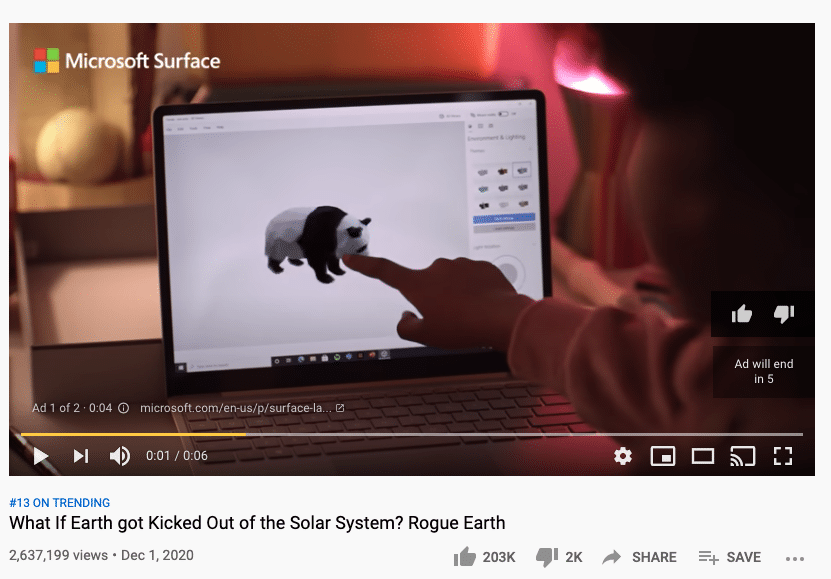
- Skippable in-stream ads are video ads that appear before or in the middle of a Youtube video. They vary in length but a viewer can skip the ad after 5 seconds.
- Non-skippable in-stream ads are video ads you can’t skip. They can also appear at the beginning or the middle of a Youtube video. They are typically 15 seconds in length. But bumper ads are a shorter version that only last 5 seconds.
- Video Discovery Ads appear on the Youtube homepage and search results page as a link to a video ad.
- Youtube display ads are a link listed above other related videos on the right-hand side of a Youtube video.
Do Google Ads Even Work For Small Businesses?
Yes. If you play your cards right, you can absolutely find success utilizing Google Ads as a small business. But that success hinges on how efficient your ads account strategy is. To be completely transparent, Google Ads can be quite complex and difficult to understand. They also require consistency and maintenance.
We’ll get into effective strategies to get you started in the next section.
When a small business does execute a successful Google ad campaign, it can leverage a higher level of exposure than possible through other online marketing tactics. While processes such as SEO require months of patience before obvious results, Google ads can create instant brand visibility.
How To Run a Successful Google Ads Campaign
As we touched on previously, getting started with Google Ads can be a difficult undertaking. But there are some helpful rules of thumb to keep in mind as you flesh out your campaign structure. Above all else, it’s vital to understand how to create a Google ad account.
Once you log into Google Ads, start by setting a goal. Do you want more phone calls? Or do you want to drive more purchases from your e-Commerce site? Be sure you have a clear direction to build off of.
Next, nail down an appropriate geographic region. This can be as specific as a neighborhood or as broad as an entire country. After this, you’ll decide on a budget. We’ll discuss more on this step more later.
Now comes one of the most crucial steps: decide on an appropriate audience or list of keywords. This can make or break a successful ad campaign. There is a range of parameters including your ideal audience’s age range, interests, behaviors, gender, income, and more.
Your audience must be lasered inefficiently to start. Remember, you’re paying per click so it’s important you’re not serving ads to an audience without the buyer’s intent. This step requires preparation and must be backed up by research. You can start by using Google Insights to hone in on potential high-performing audiences. Once you find an appropriate audience or set of keywords, you can expand from there.
Here are some more tips to consider:
Run a Re-engagement Campaign
Once you gain steady web traffic, you can re-engage past visitors. Essentially this means you can serve ads to those who already showed interest in your business. Your re-engage campaign can even serve ads on specific products a visitor viewed while on your site. This can be an excellent way to build brand recognition.
Be Budget-Wise
You may ask, how much should a small business pay on Google Ads? Technically, there isn’t a minimum spend requirement. But $1000 a month is a good starting point to see worthwhile results. As you set up your campaign, you’ll need to look at your budget through the lens of daily budgets and bids.
Your daily budget is the amount you’re willing to spend across your ad campaigns within a day. A bid is an amount you’re willing to spend on an ad click for a given keyword. Sometimes you won’t hit your daily budget cap, and some days you may go over. Likewise, you may not need to pay the full amount of your bid if your ad has a higher quality score -or the quality of your ad’s relevance- than your competitors.
Be sure to have a good understanding of what a realistic budget for your business is. It can be easy to waste a lot of money if you set too high of a bid or don’t target the proper audience.
Select Suitable Keywords
When creating your ad, you’ll need to choose a list of keywords. A keyword will be the ideal search query a user makes where you’d like your ad to appear. The keywords you select will affect your quality score and, inevitably, your cost-per-click (CPC). It’s important to thoroughly research which keywords will best fit your ad to increase your quality score. Google has a Keyword Planner you can use to research what will suit your business goals best.
Track Your Progress
Google Ads isn’t something you can set and forget. Think of it as a really expensive house plant you must constantly check the conditions of to keep it alive. As you work with Google Ads, it’s important to keep track of stats such as your clickthrough rate, ad spend, conversion rate, and most importantly cost per conversion. Throughout your campaign, you can adjust accordingly or set yourself up for greater success for your next campaign.
Another important way to track progress is to set Google Analytics up on your website and connect it to your ad campaign. This gives you a snapshot look at your progress. Google Analytics can help assure you’re reaching conversion goals once a user lands on your website.
Get Help From The Pros
Does diving nose-first into the world of Google Ads sound intimidating? Or perhaps you just don’t have the time to dig into it as you tend to your burgeoning business. Consider letting the pros take over!
Beyond Blue Media is no stranger to pulling off a successful Google Ads campaign. You can count on us to create a targeted digital marketing strategy perfect for your business’s unique needs. We’ll track down potential customers with high intent to secure an excellent ROI.
Not only can we help with Google Ads, but we can also leverage other platforms such as Facebook, Instagram, Twitter, and more!
Get in touch to see what heights we can take your business to today!


